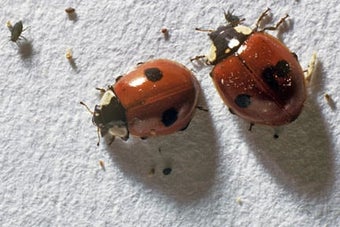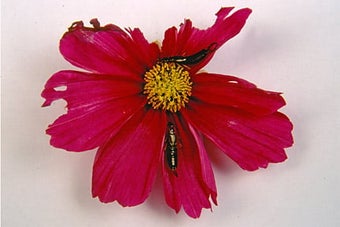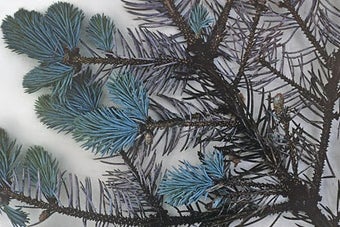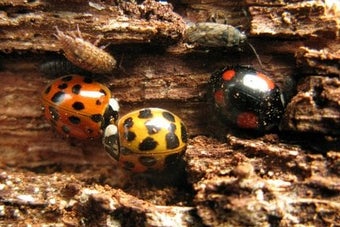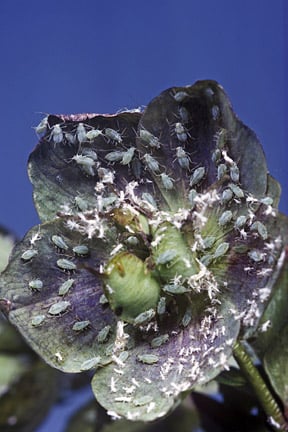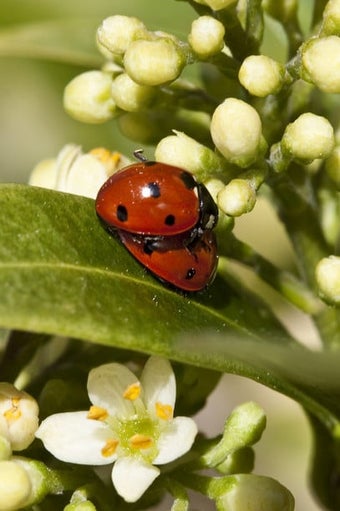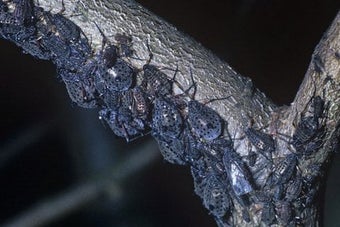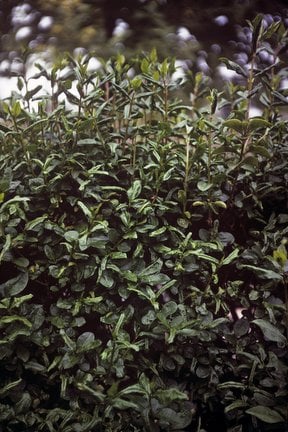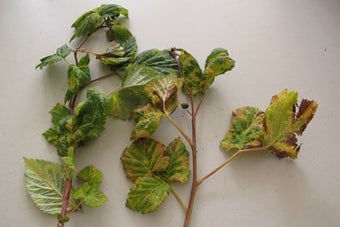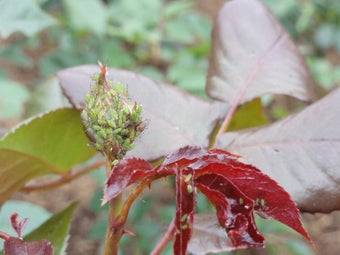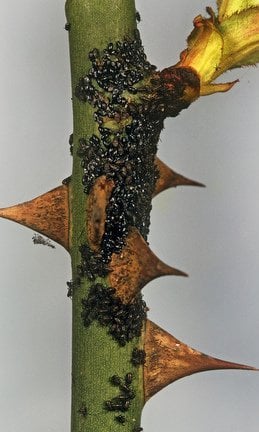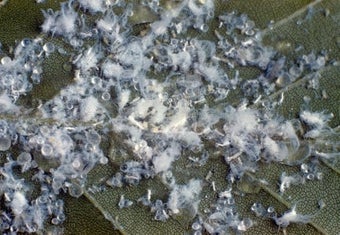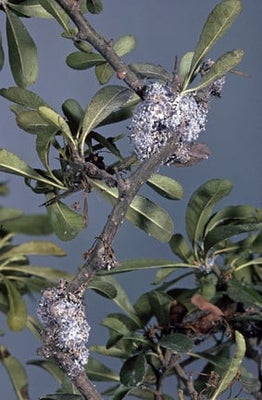
Quick facts
Common name - Woolly aphid also known as American blight
Scientific name - Eriosoma lanigerum
Plants affected - Edible and crab apples, pyracantha and Cotoneaster horizontalis
Main symptoms - Lumpy swellings on the bark and, in summer, colonies of aphids covered in white fluff on the trunk and branches
Caused by - A sap-sucking insect (aphid)
Timing - April-October
What is woolly aphid?
Woolly aphid is a black aphid that sucks from woody stems of apple, cotoneaster and pyracantha and covers itself in a white waxy secretion.
Aphids are sap-sucking true bugs and are an important part of many food chains, supporting many predators. They range in size from 1 to 7 mm (¼ in or less) long. Some aphids are known as greenfly or blackfly, but there are species that are yellow, pink, white or mottled. There are more than 500 aphid species in Britain. Some feed on only one or two plant species, but others can be found on a wide range of plant hosts. Almost any plant can be a host to aphids, including ornamentals, vegetables, fruits, greenhouse plants and houseplants. More information on aphids.
Symptoms
Woolly aphid is usually easy to spot:
- Between spring and early autumn, affected parts of the trunk and branches are covered with a fluffy white waxy material. This is secreted by the blackish brown aphids
- The thinner around old pruning cuts is a prime site for woolly aphid colonies in spring but by mid-summer the insect spreads to younger shoots
- Affected shoots usually develop soft, lumpy growths in the bark as a result of woolly aphid feeding. Such shoots are easily spotted during winter pruning. The swellings can split in frosty weather and create entry wounds for the fungal disease known as apple canker
- Woolly aphid is only found on apple, cotoneaster and pyracantha on other plants the white waxy deposits could be signs of other insects including scale insects, woolly beech aphid or in glasshouses, mealybug

Management
Aphids form the basis of many food chains and it is not unusual to have some of these animals in a healthy balanced garden ecosystem. On tall trees aphids can be considered part of the they support; natural enemies will normally reduce numbers by late summer.
- Where possible tolerate populations of aphids; aphids often do not affect cropping or future health of the tree
- Check trees frequently from spring onwards so action can be taken before a damaging population has developed
- Use finger and thumb to squash aphid colonies where practical
- Encourage aphid predators in the garden, such as ladybirds, ground beetles, hoverflies, parasitoid wasps and earwigs. Be aware that in spring aphid populations often build up before natural enemies are active in sufficient numbers and then give good control
- Research has indicated that earwigs on fruit trees can reduce aphid numbers and in fruit trees they do not cause damage. Providing shelters such as flower pots loosely stuffed with hay in trees can help increase earwig numbers
Biology
Woolly aphid overwinters on its host plants as nymphs that hide in cracks in the or in crevices around old feeding areas. During the winter months the aphids do not produce the waxy material that gives them the characteristic woolly coating in spring and summer.
In spring, the aphids become active again, mainly around old pruning cuts or other places on the trunk or larger branches where the bark is thinner. They begin sucking from beneath the bark, and start secreting the fluffy ‘wool’.
Populations reach a peak in mid to late summer, when the aphids spread onto the younger shoots. Chemicals secreted into the plant as the aphids feed induce lumpy growths in the bark, especially on the younger shoots.
In mid-summer, winged forms of the aphid develop and these will fly off in search of new host plants.








